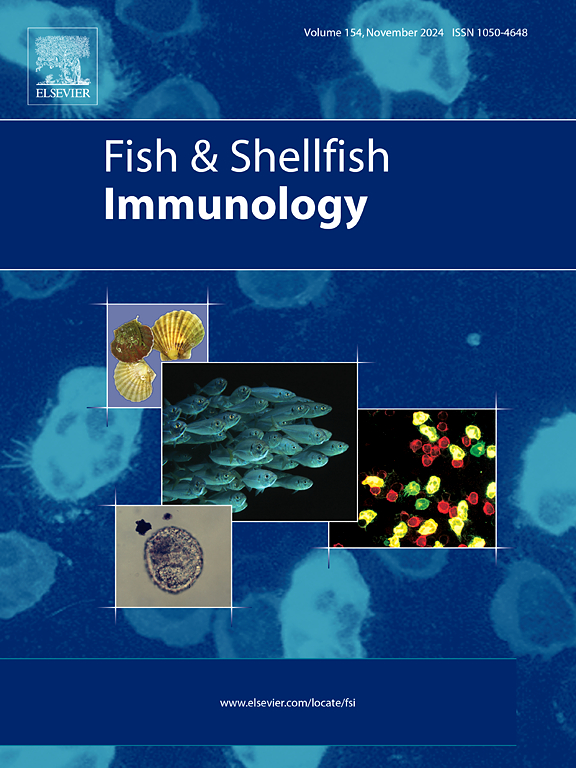Strain-specific virulence of Perkinsus marinus and related species in Eastern oysters: A comprehensive analysis of immune responses and mortality
IF 3.9
2区 农林科学
Q1 FISHERIES
引用次数: 0
Abstract
In this study, we investigated the variability in virulence among different strains of Perkinsus marinus and other Perkinsus species in Eastern oysters (Crassostrea virginica), examining the immune responses and mortality rates of oysters exposed to different Perkinsus isolates. Compared with the other assessed strains, P. marinus strain ATCC 50787 was found to induce significantly (P < 0.05) higher levels of reactive oxygen species, nitric oxide, and necrosis in oyster hemocytes. Perkinsus chesapeaki (ATCC PRA-65) elicited strong immune responses and high mortality in Eastern oysters at rates similar to those induced by the most virulent P. marinus strain. In contrast, P. olseni and P. honshuensis induced low levels of immune response and mortality. In vivo survival assays confirmed that strains inducing high immune responses in vitro also caused high mortalities in oysters. Our findings in this study highlight the importance of considering strain-specific virulence when studying Perkinsus infections in oysters. These findings have implications for understanding host–parasite interactions and managing Perkinsus-related diseases in oyster populations, particularly from the perspectives of aquaculture and conservation.
东方牡蛎中海蚀斑孢及其相关物种的菌株特异性毒力:免疫反应和死亡率的综合分析。
在本研究中,我们研究了东方牡蛎(Crassostrea virginica)中不同菌株marinus和其他种类Perkinsus菌株的毒力差异,研究了接触不同Perkinsus菌株的牡蛎的免疫反应和死亡率。与其他菌株相比,P. marinus菌株ATCC 50787显著提高了牡蛎血细胞中的活性氧、一氧化氮和坏死水平(P < 0.05)。切萨apeaki Perkinsus chesapeaki (ATCC PRA-65)在东部牡蛎中引起了强烈的免疫反应和高死亡率,其死亡率与最毒的海洋假单胞菌菌株相似。相比之下,P. olseni和P. honshuensis诱导低水平的免疫应答和死亡率。体内生存试验证实,在体外诱导高免疫反应的菌株也导致牡蛎的高死亡率。我们在这项研究中的发现强调了在研究牡蛎中的珀金杆菌感染时考虑菌株特异性毒力的重要性。这些发现对理解寄主-寄生虫相互作用和管理牡蛎种群中的珀金氏综合征相关疾病具有重要意义,特别是从水产养殖和保护的角度来看。
本文章由计算机程序翻译,如有差异,请以英文原文为准。
求助全文
约1分钟内获得全文
求助全文
来源期刊

Fish & shellfish immunology
农林科学-海洋与淡水生物学
CiteScore
7.50
自引率
19.10%
发文量
750
审稿时长
68 days
期刊介绍:
Fish and Shellfish Immunology rapidly publishes high-quality, peer-refereed contributions in the expanding fields of fish and shellfish immunology. It presents studies on the basic mechanisms of both the specific and non-specific defense systems, the cells, tissues, and humoral factors involved, their dependence on environmental and intrinsic factors, response to pathogens, response to vaccination, and applied studies on the development of specific vaccines for use in the aquaculture industry.
 求助内容:
求助内容: 应助结果提醒方式:
应助结果提醒方式:


